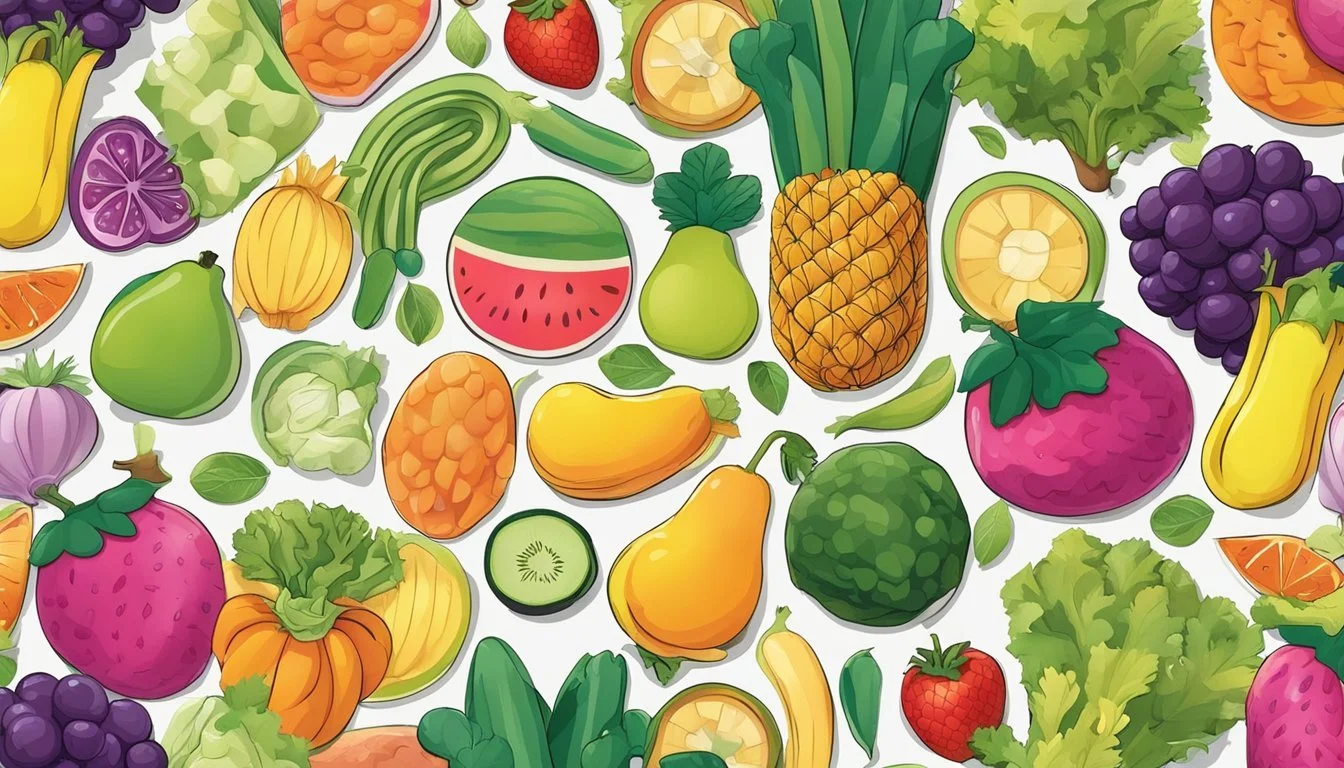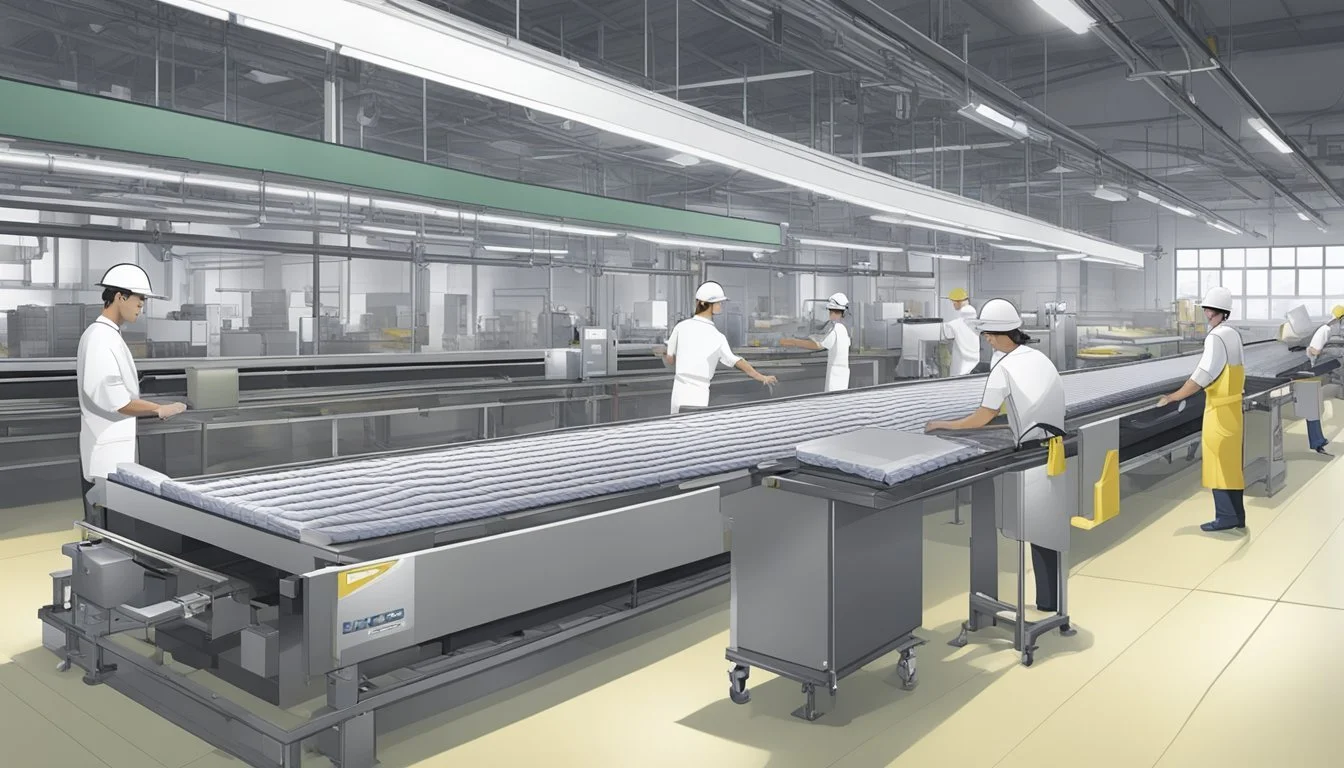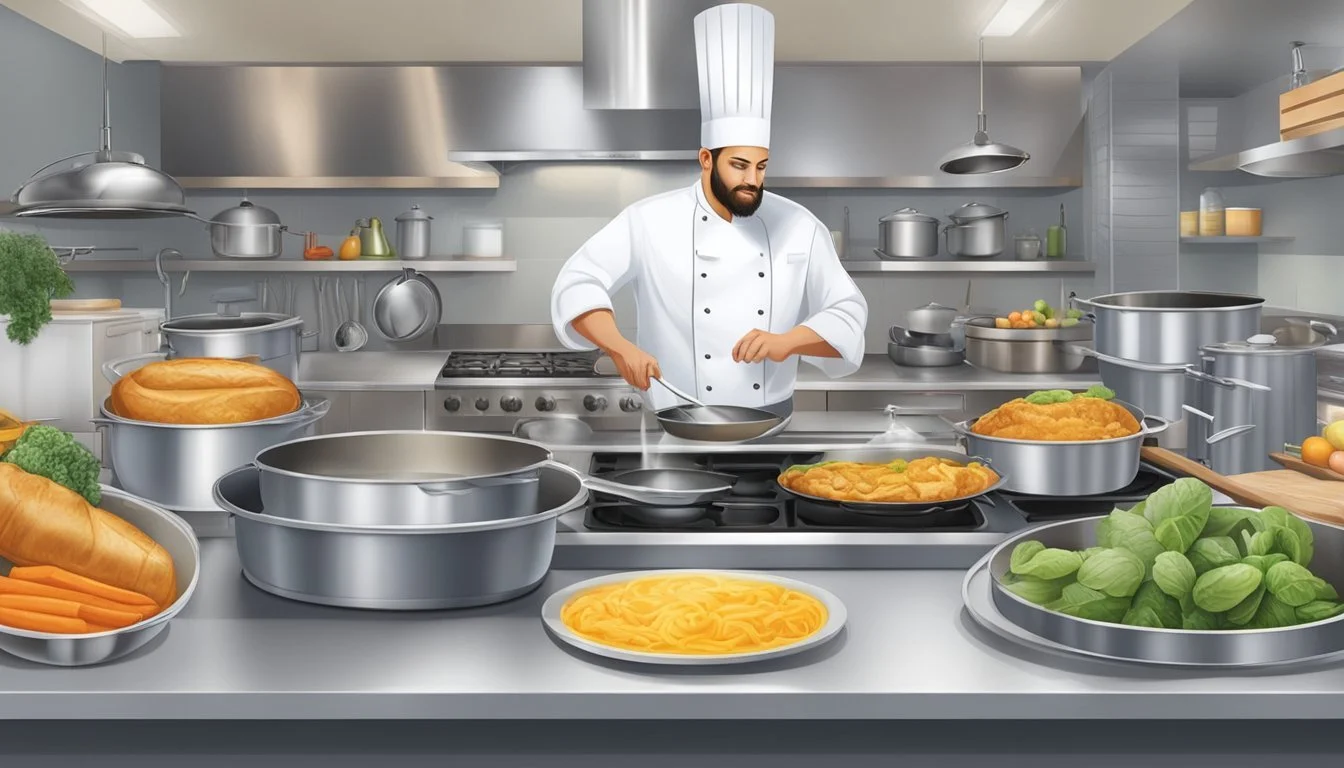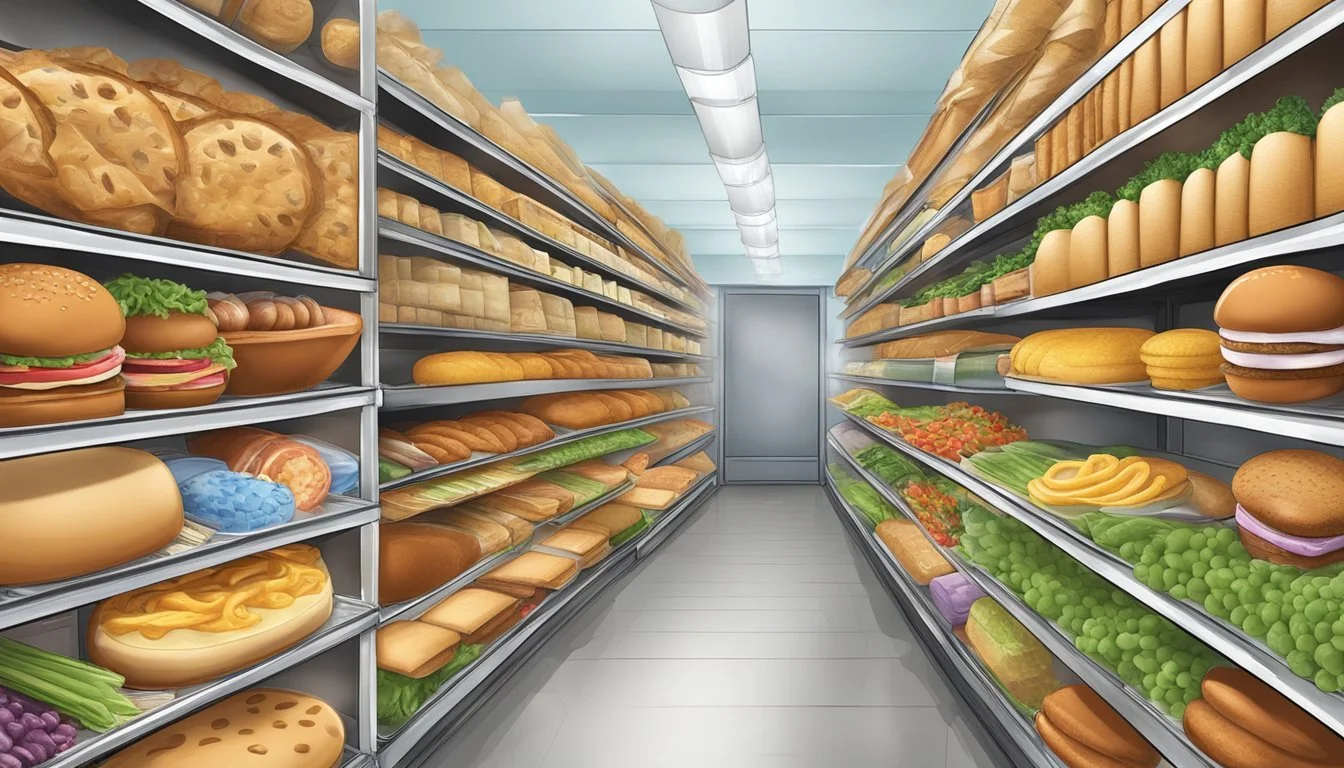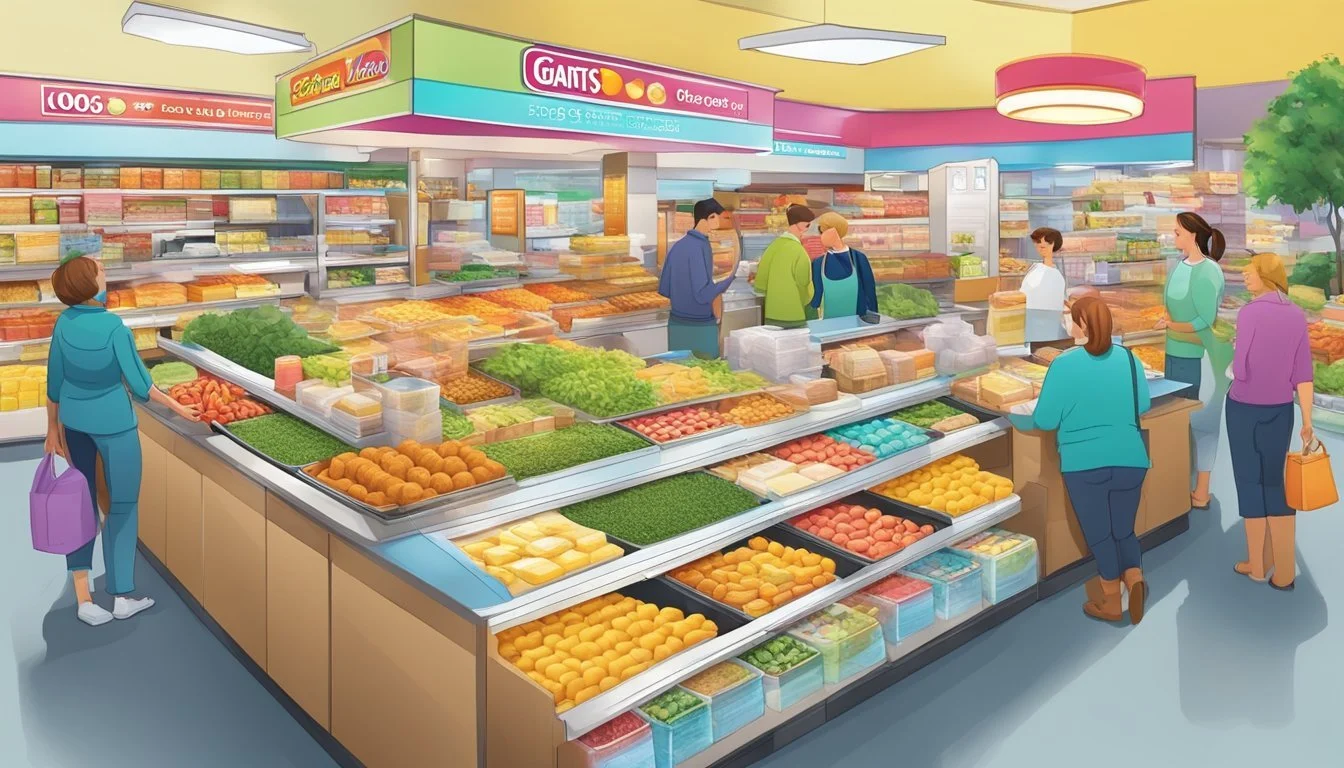Feminine Hygiene Pads at Giant Food
Innovative Solutions for Large-Scale Catering
Giant Food offers a wide selection of feminine hygiene products, including various types of pads to meet different needs. The store's inventory includes maxi pads, ultra-thin pads, overnight pads, and incontinence pads from popular brands like Always, Stayfree, U by Kotex, and Poise. Giant Food's range of pads caters to diverse preferences, with options for wings, no wings, scented, unscented, and different absorbency levels.
Customers can find pads for regular, heavy, and overnight use, as well as specialized products for incontinence. Giant Food also carries its own CareOne brand, providing budget-friendly alternatives to national brands. The store's online ordering system allows customers to conveniently purchase pads and have them delivered to their homes or offices.
Giant Food's pad selection includes eco-friendly options and products designed for sensitive skin. This variety ensures that customers can find the right product for their specific needs, whether they require extra protection, discretion, or comfort during their menstrual cycle or for incontinence management.
Overview of Giant Food Pads
Giant Food offers a wide selection of feminine hygiene and incontinence products to meet diverse needs. Their pad options range from regular maxi pads to specialized overnight and incontinence varieties.
Definition and Purpose
Giant Food pads refer to the assortment of absorbent personal care products sold by the Giant Food supermarket chain. These pads are designed to manage menstrual flow and incontinence. The product lineup includes maxi pads, ultra-thin pads, and incontinence pads in various sizes and absorbency levels.
Maxi pads feature a thick, cushioned design for heavy flow days. Ultra-thin pads provide a discreet option for lighter flow. Incontinence pads are specifically engineered to absorb and lock away urine.
Giant Food carries both name-brand pads like Always and Kotex, as well as their own CareOne store brand. This variety allows customers to choose products that best fit their individual needs and preferences.
History and Evolution
Giant Food has expanded its pad offerings over time to keep pace with advancements in absorbent technology. Early options were limited to basic maxi pads. Today's selection includes pads with wings for secure positioning, scented and unscented varieties, and specialized shapes for different body types and activities.
Innovations like FlexFoam and multi-channel designs have improved pad comfort and performance. Giant Food now stocks overnight pads with extra-long coverage and teen-specific products with age-appropriate sizing.
The addition of incontinence pads to Giant Food's inventory reflects the growing market for these products. Modern incontinence pads offer discreet protection with enhanced odor control and quick-dry technology.
Design and Materials
Giant food pads are engineered for optimal performance and comfort. Their design incorporates specific materials and features to meet various needs and preferences.
Material Selection
Giant food pads typically use a combination of absorbent and protective layers. The top layer often consists of a soft, breathable material like cotton or a synthetic blend for comfort against the skin. Underneath, a highly absorbent core made of materials such as cellulose or super-absorbent polymers quickly wicks away moisture.
A waterproof backing, usually made of polyethylene or a similar plastic, prevents leaks. Some pads incorporate odor-control technology using activated charcoal or other neutralizing agents.
Manufacturers may use eco-friendly or organic materials in response to consumer demand for more sustainable options.
Size and Shape Variations
Giant food pads come in various sizes to accommodate different needs and body types. Common dimensions range from 23 x 36 inches to 30 x 36 inches, with some extra-large options reaching up to 36 x 72 inches.
Shapes can vary from rectangular to contoured designs that provide better coverage and fit. Some pads feature wings or flaps for added protection and secure placement.
Thickness also varies, with options ranging from ultra-thin to extra-absorbent styles for overnight use or heavy flows.
Durability Considerations
Durability is a key factor in giant food pad design. Reinforced edges help prevent tearing and extend the pad's lifespan. Some products feature multiple-use designs, allowing for washing and reuse.
The adhesive backing strength is crucial for keeping the pad in place. Manufacturers use skin-safe adhesives that maintain their grip without causing irritation.
Testing for leak resistance under various conditions ensures reliability. Some pads incorporate quilted or textured surfaces to enhance fluid distribution and prevent bunching.
Manufacturing Process
Giant food pads are produced using advanced techniques and rigorous quality control. The manufacturing process combines specialized equipment with carefully selected materials to create highly absorbent and durable products.
Production Techniques
Giant food pads are typically made on high-speed production lines. The process begins with the preparation of raw materials, including superabsorbent polymers and fluff pulp. These materials are combined in precise ratios to form the absorbent core.
Next, the core is sandwiched between layers of permeable covering materials. Adhesives are applied to secure the layers together. The pads are then cut to size and shaped using automated machinery.
Packaging is the final step. The finished pads are wrapped in protective materials and boxed for distribution. Throughout production, computerized systems monitor and control each stage to ensure consistency.
Quality Control Measures
Strict quality control is essential in giant food pad manufacturing. Regular inspections occur at key points along the production line. Samples are tested for absorbency, strength, and uniformity.
Automated vision systems scan for defects or irregularities. Any substandard products are immediately removed. Batch testing verifies the pads meet all required specifications.
Hygiene protocols are rigorously enforced in the production facility. Workers follow strict sanitation procedures and wear appropriate protective gear. The manufacturing environment is carefully controlled for temperature and humidity.
Traceability measures allow manufacturers to track each batch of pads from raw materials to finished product. This enables quick identification and resolution of any quality issues that may arise.
Applications of Giant Food Pads
Giant food pads serve various purposes in both commercial and personal settings. These versatile products offer solutions for food storage, preparation, and transportation.
Commercial Uses
Giant food pads play a crucial role in the food service industry. Restaurants use them to line food trays, absorbing excess moisture and grease from fried foods. This helps maintain food quality and extends shelf life. Catering companies employ these pads to protect surfaces during food transport, preventing spills and maintaining cleanliness.
Grocery stores utilize giant food pads in meat and produce departments. They line display cases, absorbing fluids from meats and vegetables to keep products fresh and presentable. Food manufacturers incorporate these pads into packaging for raw meats and poultry, ensuring safe transport and extended shelf life.
Personal Use Scenarios
In home kitchens, giant food pads offer practical solutions for food preparation and storage. They can line refrigerator shelves, catching spills and simplifying cleanup. When defrosting meats, these pads absorb excess liquid, preventing cross-contamination.
For outdoor activities, giant food pads prove useful in coolers. They absorb condensation and melted ice, keeping food dry and fresh. Picnickers use them as makeshift placemats on uneven surfaces. Home cooks find them valuable for draining fried foods, absorbing excess oil to create crispier results.
Environmental Impact
Giant Food Pads have significant environmental implications related to sustainability practices and waste management. Their production, use, and disposal affect resource consumption and pollution levels.
Sustainability Practices
Giant Food Stores has implemented several sustainability initiatives. Their Cleona, Pennsylvania store achieved zero waste status, marking a milestone in reducing environmental impact. The company partnered with Divert Inc. to process over 30.8 million pounds of wasted food, demonstrating commitment to food waste reduction.
Giant Food emphasizes responsible sourcing and energy efficiency in its operations. They focus on reducing packaging materials and increasing the use of recyclable or compostable alternatives. The company also invests in energy-efficient refrigeration systems and lighting to minimize their carbon footprint.
Recycling and Disposal Methods
Proper disposal of Giant Food Pads is crucial for minimizing environmental harm. Unlike traditional mops that use large amounts of water and detergent, disposable pads generate less wastewater but create more solid waste.
Recycling options for these pads are limited due to their composition. Most pads are made from non-biodegradable materials like polyester, which is derived from fossil fuels. This contributes to long-term environmental issues as these materials persist in landfills.
To address this, some retailers offer take-back programs for used pads. Consumers can also explore reusable alternatives made from sustainable materials to reduce waste generation. Proper sorting and disposal of pad packaging can help maximize recyclability.
Market Analysis
The giant food pads market is experiencing significant growth due to increasing consumer demand and evolving competitive dynamics. Key factors driving expansion include rising food safety concerns and the need for extended product shelf life.
Consumer Demand
Consumer awareness of food safety and hygiene has surged in recent years. This has led to increased demand for giant food pads in packaging applications. Shoppers now actively seek products with effective moisture absorption and contamination prevention.
Convenience is another major driver. Giant food pads allow for easier storage and transport of perishable items. This appeals to busy consumers looking for hassle-free food handling solutions.
The growing preference for fresh, minimally processed foods has also boosted demand. Giant food pads help maintain product quality without the need for additional preservatives or packaging layers.
Competitive Landscape
The giant food pads market features a mix of established players and innovative newcomers. Leading companies include Elliott Absorbent Products, Novipax, and Sirane. These firms leverage advanced technologies to develop high-performance, cost-effective solutions.
Product differentiation is a key competitive strategy. Manufacturers are investing in R&D to create pads with enhanced absorption capacities, antimicrobial properties, and eco-friendly materials.
Mergers and acquisitions are reshaping the industry. For example, BUNZL's acquisition of De Ridder Packaging has strengthened its market position. This trend is expected to continue as companies seek to expand their product portfolios and global reach.
Pricing pressures remain a challenge. Manufacturers must balance cost considerations with performance requirements to maintain competitiveness in this rapidly evolving market.
Regulatory Considerations
Giant food pads are subject to various regulatory requirements to ensure consumer safety and product quality. These regulations cover health and safety standards as well as compliance and certification processes.
Health and Safety Regulations
Food safety authorities closely monitor giant food pads. The U.S. Food and Drug Administration (FDA) oversees these products, ensuring they meet food contact material standards. Manufacturers must use FDA-approved materials and additives.
Antimicrobial properties in some pads require additional scrutiny. The EPA may regulate pads with antimicrobial claims under pesticide laws.
Packaging regulations also apply. Giant food pads must not transfer harmful substances to food. Migration testing is often required to verify safety.
Compliance and Certification
Manufacturers of giant food pads must adhere to Good Manufacturing Practices (GMPs). These ensure consistent quality and safety in production processes.
Third-party certification is common. Organizations like NSF International offer food safety certifications for packaging materials.
Companies may need to submit documentation to regulatory bodies. This can include material composition, safety data, and test results.
Labeling requirements are strict. Product claims must be accurate and substantiated. Any antimicrobial claims require specific regulatory approvals.
Regular audits and inspections are part of maintaining compliance. Companies must keep detailed records of their production processes and quality controls.
Innovations and Future Projections
The food pad industry is experiencing rapid technological advancements and shifting market trends. These developments are reshaping product capabilities and consumer expectations.
Technological Advancements
Smart food pads with embedded sensors are emerging as a game-changing innovation. These pads can monitor food freshness and alert consumers to potential spoilage. Biodegradable materials are gaining traction, with manufacturers developing pads made from plant-based fibers and compostable polymers.
Nanotechnology is being applied to create ultra-absorbent pads that can extend food shelf life significantly. Some companies are exploring antimicrobial coatings that inhibit bacterial growth on food surfaces.
3D-printed food pads offer customizable shapes and sizes, catering to specific packaging needs. This technology allows for rapid prototyping and efficient small-batch production.
Market Trends
The demand for sustainable food pads is rising sharply. Consumers and regulators are pushing for eco-friendly alternatives to traditional plastic-based products. This shift is driving investment in recyclable and compostable materials.
E-commerce growth is influencing food pad design, with emphasis on durability during shipping. Manufacturers are developing pads that can withstand temperature fluctuations and rough handling.
There's a growing market for specialized food pads tailored to specific food types, such as high-absorbency pads for meat and moisture-regulating pads for produce. This trend is leading to a more diverse product range.
Food safety concerns are boosting interest in antimicrobial and tamper-evident food pads. These products aim to reduce foodborne illness risks and enhance consumer confidence.
Challenges and Limitations
Giant food pads face several challenges in their development and implementation. One major hurdle is the cost of materials and production. Creating oversized absorbent pads requires larger quantities of raw materials, potentially increasing manufacturing expenses.
Disposal presents another significant issue. Larger pads generate more waste, putting additional strain on disposal systems and landfills. This raises environmental concerns about increased plastic and non-biodegradable material usage.
Storage and transportation pose logistical difficulties. The bulky nature of giant food pads requires more space in warehouses and delivery vehicles, potentially increasing operational costs for retailers and distributors.
Compatibility with existing packaging machinery can be problematic. Many food processing facilities may need to modify or replace equipment to accommodate the larger pad sizes, leading to substantial capital investments.
Consumer acceptance remains uncertain. While giant pads may offer superior absorption, customers might hesitate to purchase products with noticeably larger packaging or higher prices due to the inclusion of oversized pads.
Regulatory compliance presents challenges, particularly for food-contact materials. Manufacturers must ensure all components meet stringent safety standards across different jurisdictions, which can be complex for larger, more absorbent products.
Balancing absorption capacity with pad thickness is crucial. Excessively thick pads could alter product presentation or reduce package efficiency, while inadequate absorption might fail to meet performance expectations.
Conclusion and Summary
Giant Food pads serve multiple purposes in the retail food industry. These versatile products offer convenience and hygiene solutions for customers and employees alike.
The pads come in various sizes and materials to suit different needs. Absorbent options help control moisture and spills in food packaging and displays.
Giant Food has integrated sustainability ratings into their product labeling. This initiative allows shoppers to make informed choices about environmental and social impacts.
The company's commitment to innovation extends to their food safety practices. Implementation of new testing methods ensures quality control across diverse food products.
Giant Food's online presence enables customers to order convenience items like pads for delivery. This service enhances accessibility for those unable to shop in-store.
While primarily known for groceries, Giant Food's product range demonstrates adaptability to changing consumer demands. The inclusion of convenience items reflects a holistic approach to meeting customer needs.
As the retail landscape evolves, Giant Food continues to balance tradition with progress. Their focus on both physical and digital shopping experiences positions them for ongoing relevance in the competitive supermarket sector.



